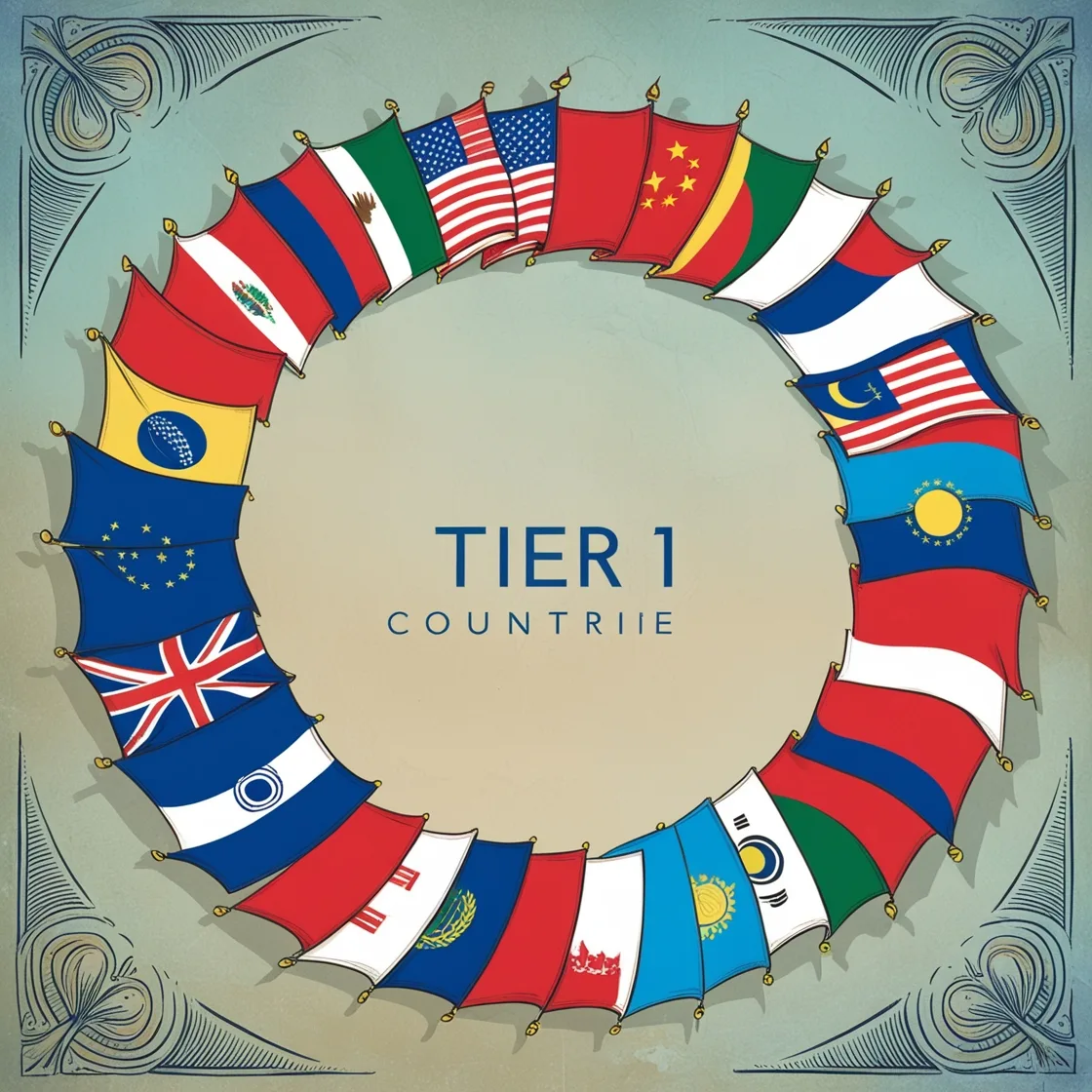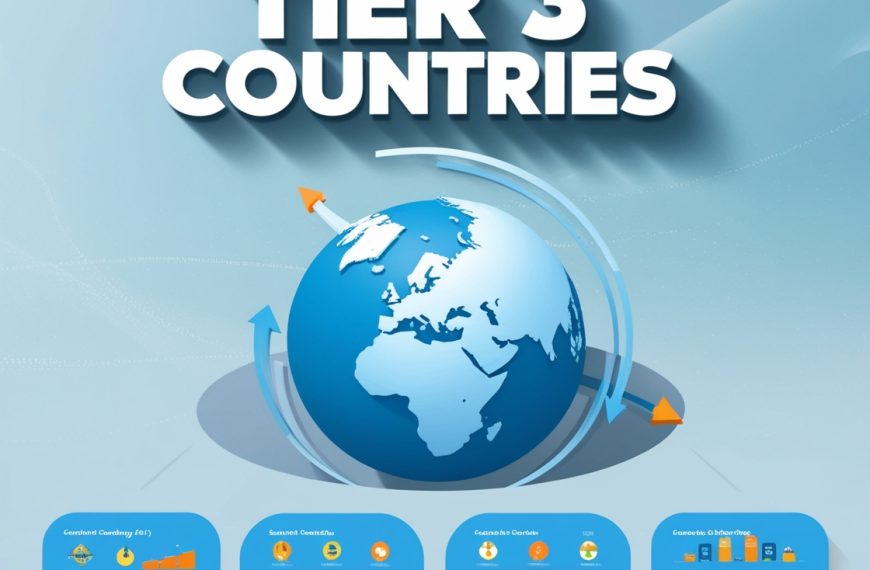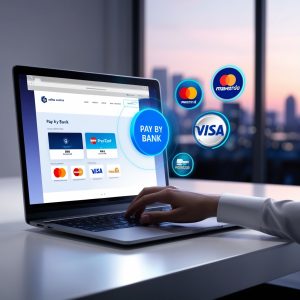Effective audience segmentation remains essential for improving outreach results and achieving maximum ROI in global markets marketing and business strategy. One of the most common segmentation methods is geography – specifically, by classifying countries into three primary tiers: Tier 1, Tier 2, and Tier 3. This article examines the definition of Tier 1 countries. It explains their critical role in marketing strategies while guiding businesses to penetrate these lucrative markets for better growth and profitability.
The Tiers include more than geographic positioning, which might appear to be the only factor. They demonstrate levels of economic advancement along with consumer purchasing power and digital evolution. Marketers must understand different Tiers, with a particular focus on Tier 1 countries, in order to develop targeted campaigns and distribute resources efficiently.
What Are Tier 1 Countries?
The Tier 1 countries definition encompasses countries which possess advanced economic development alongside high GDP figures and established digital infrastructure systems. The average income levels for people living in these countries are higher than for other regions. These areas promote sophisticated money management systems while maintaining robust online shopping habits and brand recognition. Affiliates experience both substantial profitability opportunities and fierce competition from operating in Tier 1 countries.
The defining characteristics of Tier 1 countries include:
• Strong purchasing power.
• Well-developed e-commerce and advertising infrastructure.
• Strong legal and financial institutions.
• High internet penetration and digital adoption.
• Cultural openness to new brands and products.
List of Tier 1 Countries
The categorization may show minor differences based on the industry or data provider, but Tier 1 top countries for marketing list typically contain:
• United States (USA)
• Canada
• United Kingdom (UK)
• Germany
• France
• Australia
• New Zealand
• Switzerland
• Sweden
• Norway
• Netherlands
• Japan
These countries demonstrate economic prosperity along with a strong consumer culture, which is supported by their extensive online presence, and their populations demand excellent customer service and user experience.
Why Tier 1 Countries Are Important for Marketing and Business
In fact, competing in Tier 1 markets usually involves entering one with that might be seen as fierce competition within an area, but this regional competition can also act as one of the many drivers for innovation and growth. People here spend more on their needs, but at the same time demand far better quality – compelling brands to continuously improve their value proposition. Well, it definitely opens up a whole lot of learning opportunities for companies. Every campaign, consumer experience and competitor maneuver brings precious impetus into the fold: insights that can enhance some of the best strategies ever. However, this is also the kind of situation that makes competition in high-income countries a significant driver for such long-term learning, flexibility, resilience and continuous improvement.
To better understand the strategic value of entering these competitive yet rewarding environments, let’s take a closer look at the key reasons why Tier 1 countries play such a critical role in marketing and business development.
1. Higher Purchasing Power
People with sustainable income in Tier 1 countries tend to purchase premium items and subscriptions together with value-added services. Brands that provide high-end niche or specialized products find potential markets through this situation.
2. Mature Markets Mean Informed Consumers
The consumer base in Tier 1 countries is often well-informed and brand-savvy. People conduct research before buying products while they evaluate different brands and seek authentic, high-quality options. The marketing campaigns need to be innovative, data-driven, and engaging because of the well-informed consumer base.
3. Advanced Infrastructure Logistics
Payment systems, legal frameworks, and customer support all operate at a high level of development in Tier 1 nations. The system enables risk-free product delivery alongside protected transactions and effective conflict-resolution processes.
4. Technological Maturity
The combination of advanced internet penetration along with mobile usage makes Tier 1 countries optimal for digital-first marketing approaches. The marketing strategies of SEO and SEM, together with social media marketing influencer campaigns and retargeting, demonstrate high effectiveness in these specific regions.
5. High ROI Potential
The high costs of advertising in Tier 1 markets often produce sufficient returns to justify the expenses. Better customer retention, along with elevated average order value and strong brand loyalty, leads to improved profit margins.
6. Global Influence and Brand Recognition
Achieving success in a Tier 1 market leads to improved brand credibility, which extends across the global market. Brands that succeed in the U.S. or Western Europe gain easier access to emerging markets because of their established reputation.
Benefits and Challenges of Targeting Tier 1 Countries
| Benefits | Challenges |
| Access to Valuable Customer Data. Tier 1 audiences often interact with brands across multiple platforms, providing a rich source of data for refining strategies, personalizing experiences, and optimizing customer journeys. | High Competition. Tier 1 markets are saturated, making it difficult to stand out without a strong USP. |
| Scalability and Sustainability. These markets offer scalability due to their infrastructure and consumer habits. Products can achieve long-term sustainability via models like subscriptions and memberships. | Slower Brand Loyalty Formation. Consumers in Tier 1 countries have more options and are more discerning, which can lead to longer customer acquisition cycles and a slower path to building brand loyalty. |
| Business-Friendly Environment. Supportive policies, access to funding, and skilled labor make Tier 1 countries attractive for long-term business development and partnerships. | Stricter Regulations. Strict enforcement of data privacy (like GDPR), advertising, and consumer rights increases compliance costs and complexity. |
| Easier Market Research and Analytics. Sophisticated tools and reliable third-party data allow in-depth consumer analysis, resulting in better campaign outcomes. | Cultural Sensitivity. Despite the economic similarity, cultural nuances differ and must be considered in all messaging. |
| Strong Affiliate and Influencer Networks. These regions host the largest affiliate networks and influencer communities, helping brands scale through trusted, localized marketing. | Higher Costs. Advertising costs (CPC, CPM, etc.) are significantly higher compared to Tier 2 and 3 regions. |
Conclusion: Strategies for Successfully Targeting Tier 1 Markets
Entering and targeting Tier 1 countries offers great opportunities but also creates many challenges. These markets are wealthy, advanced in technology, and have strict rules, so a basic approach won’t work.
To succeed, you need a solid plan with localization, data-driven decisions, following regulations, and focusing on quality and honesty. Localization involves more than just translation. It’s about changing your brand message to fit the culture, values, humor, and language of each country. What works in the United States might not be effective in Japan or might upset people in Germany. You need to adjust everything from images and communication style to product offerings and customer service to connect with local audiences. When done well, it builds emotional connections, trust, and long-lasting engagement.
Building trust is also crucial. People in Tier 1 markets are informed and careful about their choices. They don’t like marketing that looks too perfect or fake. They prefer brands that are open and genuine. Showing real customer feedback and working with trusted influencers helps create the trust needed for strong relationships.
Marketing should be based on high-quality data. In Tier 1 markets, you have access to advanced tools to understand customer behavior, test ideas, and improve performance quickly. Using CRM systems and testing platforms allows you to meet changing customer needs promptly, ensuring your marketing remains relevant and effective.
Legal compliance is very important too. Tier 1 countries have strict laws about data privacy, advertising, and consumer protection, like GDPR in the EU. Businesses need to follow these laws from the beginning to avoid fines and damage to their reputation. Paying attention to regulations builds trust and keeps the business stable in the long run.
Finally, you must meet high standards. Consumers in Tier 1 regions expect top-quality experiences in everything – from how fast a website works to customer service and product packaging. A consistent, high-quality experience enhances brand reputation and encourages repeat business, which is crucial in markets where gaining new customers is costly. Even though it’s complex and competitive, Tier 1 countries offer unique chances for growth, building brand trust, and steady profits. Success requires adaptability, cultural understanding, and operational excellence. The rewards are significant and well worth the effort.








